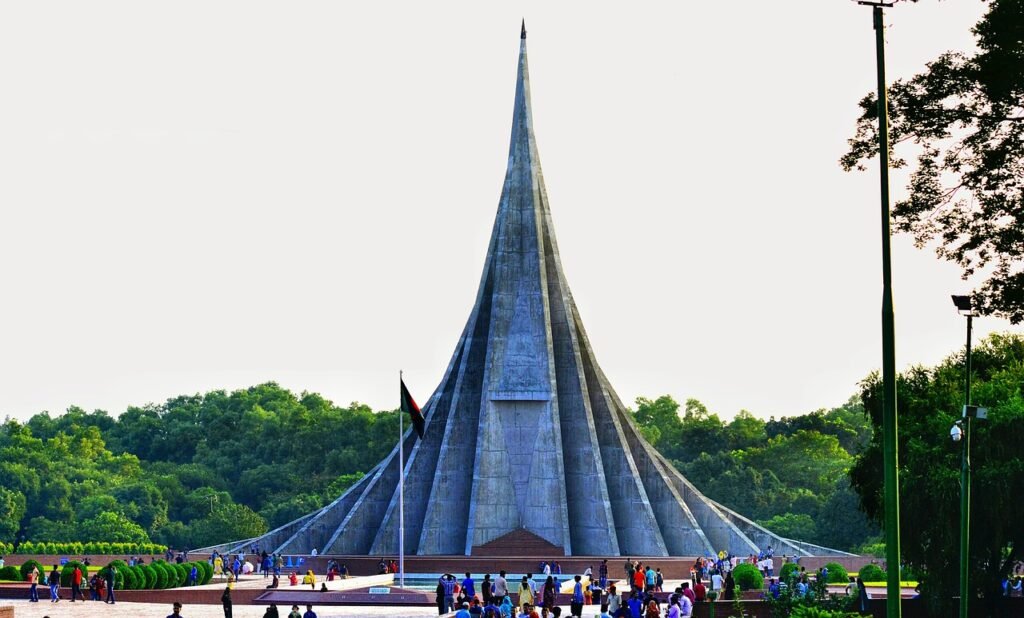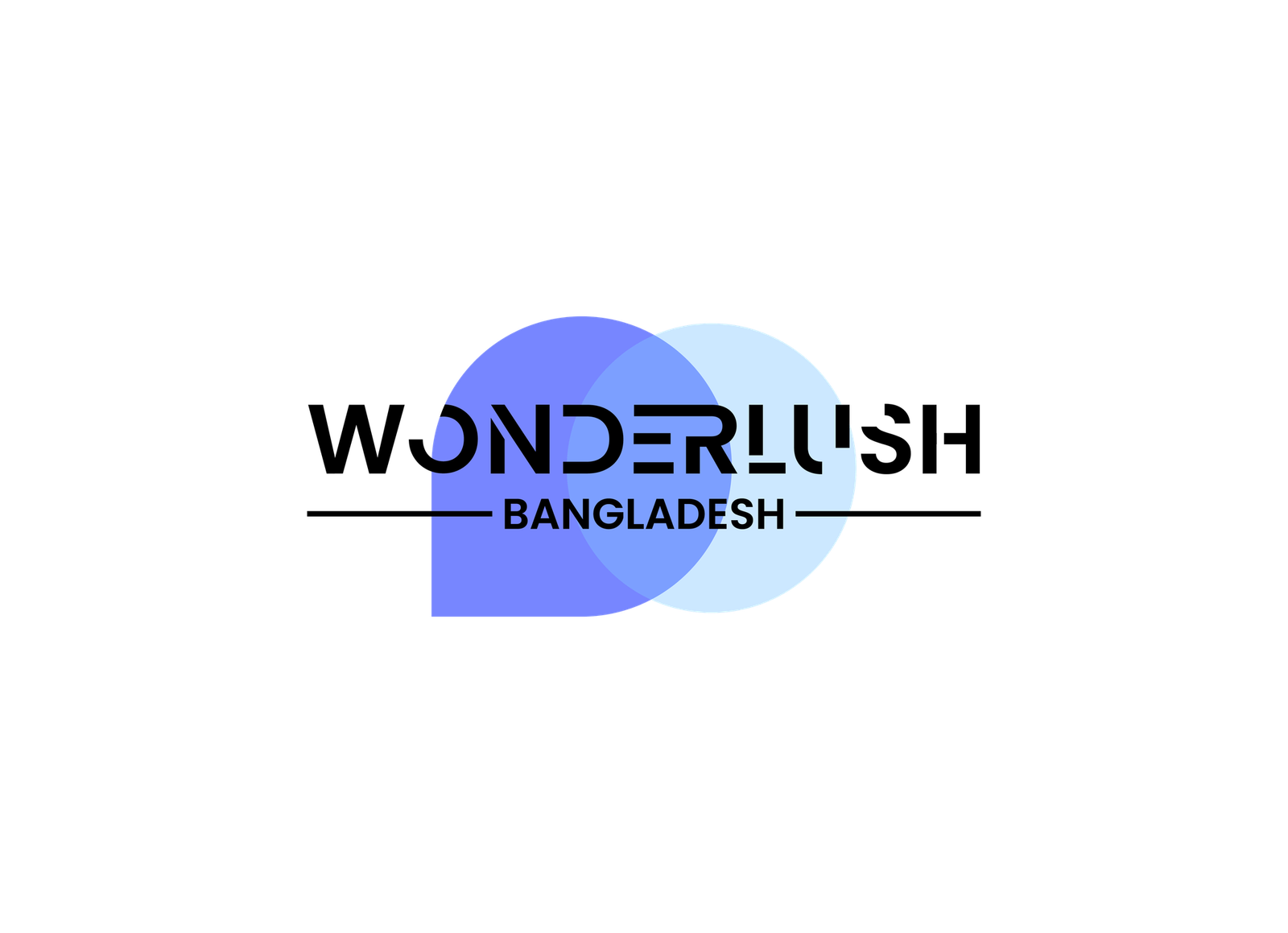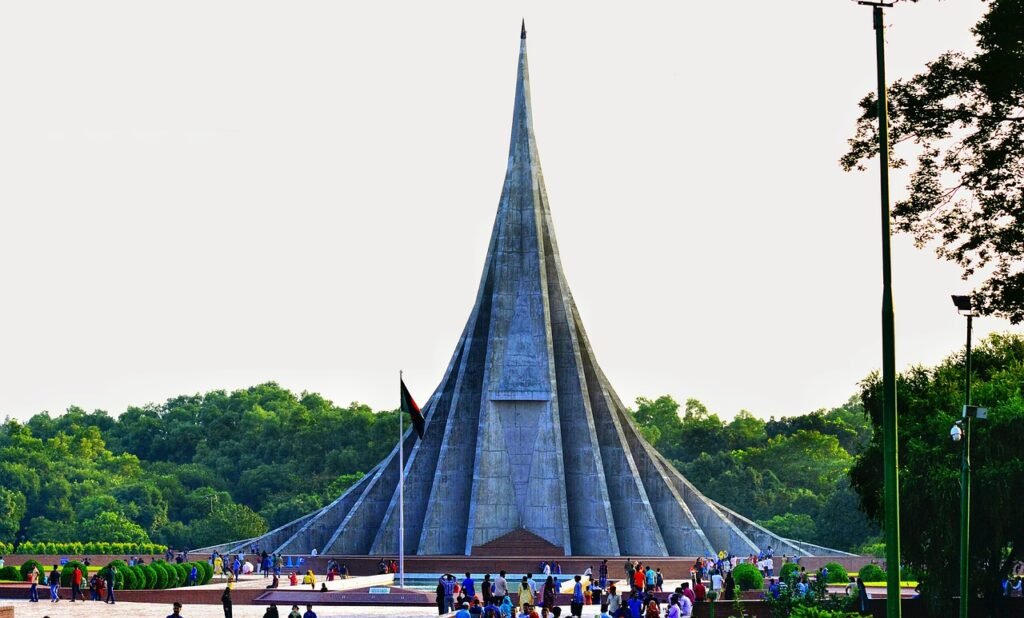Bangladesh National Martyrs Monument- In Bangla- Jatiyo Sriti Shoudho
The Bangladesh National Martyrs’ Monument, also known as Jatiyo Smriti Soudho, is a significant national symbol and an iconic structure in Bangladesh. Here are the details:
Historical Significance
The National Martyrs’ Monument commemorates the sacrifice of those who lost their lives during the Bangladesh Liberation War in 1971, which led to the independence of Bangladesh from Pakistan.
Design and Architecture
- Architect: The monument was designed by Syed Mainul Hossain, a renowned Bangladeshi architect.
- Structure: The design features seven isosceles triangular concrete structures, each varying in size, which symbolize the seven significant stages of the Liberation War. The highest point of the structure is 150 feet (approximately 45.72 meters).
- Symbolism: The seven triangular shapes represent the seven Bir Sreshtho, the highest gallantry award for the soldiers who showed extreme bravery during the war. The rising structures embody the resilience and courage of the martyrs.

Surrounding Area
- Landscape: The monument is set amidst a beautifully landscaped area that includes a vast expanse of gardens, a water body, and walkways. The entire complex covers about 34 hectares (84 acres).
- Mass Graves and Relics: Surrounding the monument are several mass graves and a reflecting pool, which add to the solemnity of the place. Relics from the war and plaques with the names of the martyrs are also part of the memorial complex.
Inauguration
The National Martyrs’ Monument was officially inaugurated on December 16, 1982, marking the 11th Victory Day of Bangladesh.
Visiting
- Accessibility: The monument is accessible to the public and is a popular site for both locals and tourists. It is especially visited during national holidays such as Victory Day (December 16) and Independence Day (March 26).
- Cultural Significance: The monument holds a deep cultural significance for the people of Bangladesh. It is a place of reflection, patriotism, and remembrance of the sacrifices made for the country’s independence.
Additional Features
- Educational Visits: Schools and educational institutions often organize trips to the monument to instill a sense of history and national pride in students.
- Commemorative Events: Various events, including wreath-laying ceremonies by government officials, military parades, and cultural programs, are held at the monument to honor the martyrs.
The National Martyrs’ Monument stands as a powerful symbol of Bangladesh’s struggle for independence and the valiant efforts of those who gave their lives for the cause. It is not only a site of historical importance but also a testament to the spirit and resilience of the Bangladeshi people.

Bangladesh National Martyrs' Monument: Visitor Information
Location
- Address: Savar, Dhaka, Bangladesh
- Distance from Dhaka: Approximately 35 kilometers northwest of the city center.
Visiting Hours
- Open Time: The monument is generally open to visitors from early morning.
- Closing Time: It typically closes at dusk.
- Special Occasions: On national holidays such as Victory Day (December 16) and Independence Day (March 26), the monument remains open for longer hours, and special ceremonies are held.
Entry and Tickets
- Entry Fee: There is no entry fee; visiting the National Martyrs’ Monument is free of charge.
- Guided Tours: Occasionally, guided tours may be available, especially on significant days.
Significant Occasions and Events
- Victory Day (December 16): Marks the victory of Bangladesh in the Liberation War. The monument is a central location for celebrations and remembrance ceremonies.
- Independence Day (March 26): Celebrates the declaration of independence from Pakistan in 1971. Various patriotic programs and events take place at the monument.
Significance of the Monument
- The monument symbolizes the bravery and sacrifice of the millions who fought and died during the Bangladesh Liberation War of 1971.
- The seven isosceles triangular structures represent the seven stages of the struggle for liberation.
- It is a place of reflection, national pride, and remembrance, attracting visitors from all over the country and abroad.
How to Get There
-
By Road
- From Dhaka:
- Private Car: You can drive to Savar via the Dhaka-Aricha Highway, which takes about 1 to 1.5 hours depending on traffic.
- Bus: Several public and private bus services operate between Dhaka and Savar. Buses leave from various terminals such as Gabtoli and Mirpur.
- Taxi/CNG: Taxis and CNG auto-rickshaws are available for hire from different parts of Dhaka.
- From Dhaka:
-
By Rail
- There is no direct train service to Savar. The nearest major railway station is in Dhaka. From there, you can take a bus, taxi, or CNG auto-rickshaw to Savar.
-
By Air
- The nearest airport is Hazrat Shahjalal International Airport in Dhaka. From the airport, you can hire a taxi or take a bus to reach Savar.
Tips for Visitors
- Best Time to Visit: Early morning or late afternoon to avoid the midday heat and to enjoy the serene environment.
- Attire: Wear comfortable clothing suitable for walking and possibly standing for extended periods.
- Photography: Photography is allowed, but it is advisable to respect any restrictions, especially during official ceremonies.
- Facilities: Basic amenities like restrooms and refreshment stalls may be available near the entrance.
The Bangladesh National Martyrs’ Monument is a profound symbol of national pride and history, offering visitors a chance to reflect on the sacrifices made during the Liberation War. Its location in Savar, close to Dhaka, makes it an accessible and significant site for both locals and tourists.

